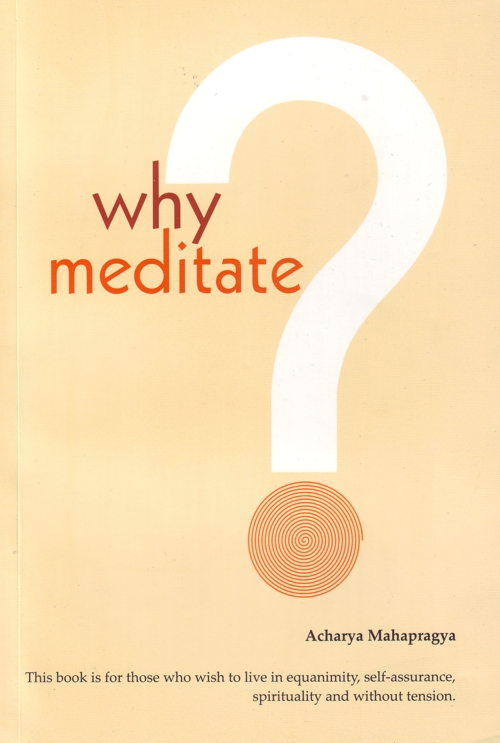
 On meeting our friends, acquaintances and relatives, the very first question that we usually ask is: "How are you? How's your health?" Here, the reference is to physical health. We never ask about mental or emotional health because the mind is subtler than the body, and emotions are also at a subtler level. These are not visible to us. That which is visible is our physical body and so we are inquisitive only about the physical body.
On meeting our friends, acquaintances and relatives, the very first question that we usually ask is: "How are you? How's your health?" Here, the reference is to physical health. We never ask about mental or emotional health because the mind is subtler than the body, and emotions are also at a subtler level. These are not visible to us. That which is visible is our physical body and so we are inquisitive only about the physical body.
So, in this context, we should know something about our body. The body that is visible to us is the gross body. Within this is a subtle body, and within that is an even subtler body. In Jain terminology, the names of the bodies are Audarik (gross), Tejas (subtle) and Karma (subtlest). All the three bodies are interconnected. The macro body being visible to us is the centre of our attention, but without knowing the subtle and subtler bodies, we cannot understand the real nature of the gross body.
How was the physical body was created? Who is the creator? The karmic body is the main cause of creation of the physical body, the acquisition of the physical body acts as the external cause for taking on a particular form. The latter absorbs the material (pudgal) particles to allow the formation of the gross body. The fruition of each and every karma is present in the chambers of our brain and body. Millions of such chambers exist. Cells abound in our body and brain (latter has neurons). All these cells organized together systematically and gave rise to the shape of a gross body. Why does this happen? Why does this develop? The cause is the karmic body. The vibrations and consequences emerging from the karmic body manifest themselves through the means of a concordant part of a physical body. Through the medium of that body part, they perform their function. All the consequences of the karmic body are present in some body part or the other.
Who is the controller of this gross body? It is the Tejas Sharir (subtle body). Whenever the question of health arises, the functioning of this Tejas Sharir must be considered. The vibrations of Tejas Sharir are the vital life force or praan (bio-energy). In Jain Metaphysics, ten kinds of praan have been elaborated. These are as follows:
- Shrotendriya Praan (vital force to listen)
- Chakshurendriya Praan (vital force to see)
- Ghraanendriya Praan (vital force to smell)
- Rasnendriya Praan (vital force to taste)
- Sparshnendriya Praan (vital force to touch)
- Sharir Praan (vital force of body)
- Bhaashaa Praan (vital force of speech)
- Mana Praan (vital force of mind)
- Shvaasocchavaas Praan (vital force of breath)
- Aayushya Praan (vital force of lifespan)
Ayurveda and Hathayoga have described five kinds of Praan (vital force):
- Praan
- Apaan
- Samaan
- Vyaan
- Udaan
Our body works with the help of electromagnetism. All bodily functions are occurring because of this force. A kind of electric force is in the form of electricity outside, while another such force is within us. There is no part of our body devoid of this electric force and there is no activity of ours which is done without its help. According to physiology, our brain needs 20 watts of electric energy. The brain requires maximum energy for its functioning. The powerhouse of electricity is our aura or the Tejas Sharir (luminous body). The Tejas Sharir is made up of electric force. The simplest answer to questions pertaining to health is: if the Tejas Sharir is well, our physical body is healthy and if it is weak, our physical body is also weakened. For example: The clock is working fine. After some time, it does not show the correct time. Why? We say the battery has run out, and hence, the clock stops working properly. Similarly, we, too, have a battery within our bodies in the form of electricity. If this electric force is depleted, the systems of the body start malfunctioning and we are prone to disease. Until our body is backed up well by the luminous body or Tejas Sharir we remain healthy. Ayurveda also believes in the same principle. Why does a person fall sick? An Ayurvedic doctor would say that the Prana (vital life force) is depleted. According to medical science, the resistance power has lessened, or the immunity system has become feeble! All of these convey the same essence: that with depletion of the Prana, the immune system has become feeble. Why does the immune system become weak? One of the causes of its feebleness is imbalance. A person who does not maintain a balance between action and inaction lessens the potential of its vital force. Balance should be maintained between action and inaction. If a man keeps on performing actions constantly, while he ever remains engaged in executing his job, his vital force would be over-used, and its strength would lessen. What would happen if your expenditure exceeded your income? The result would be the closing down of the shop, disorder would follow. Hence, it is necessary to check the sources of income and expenditure of our vital force as well. Jain Aagamas have described an ascetic discipline, which is actually meant for spirituality, but is very important for the maintenance of our health also. Whenever an ascetic goes out for half a kilometer, one-kilometer or even for 100 steps - on returning, he has to practice 'Kayotsarga' i.e. relaxation. Relaxation has to be practiced with all monastic disciplinary practices like Pratikraman (a special prayer for repentance, forgiveness) and Pratilekhan (watching their clothes carefully with the aim of not killing or hurting any living organisms). It is necessary for a monk to practice relaxation 15-20 times a day. This means balancing action and inaction. If we practice Kayotsarga i.e. relaxation, after every action, we establish an equilibrium. Relaxing just once is not sufficient. Kayotsarga can be practiced by anyone, twenty to thirty times a day. Whenever you are engaged in activities for an hour or two, you should practice Kayotsarg for five minutes. This will help maintain equilibrium. If you keep on working continuously without a break, your vital energy will be in danger.
 Acharya Mahaprajna
Acharya Mahaprajna
 Copyright by Acharya Mahaprajna ©2005
Copyright by Acharya Mahaprajna ©2005